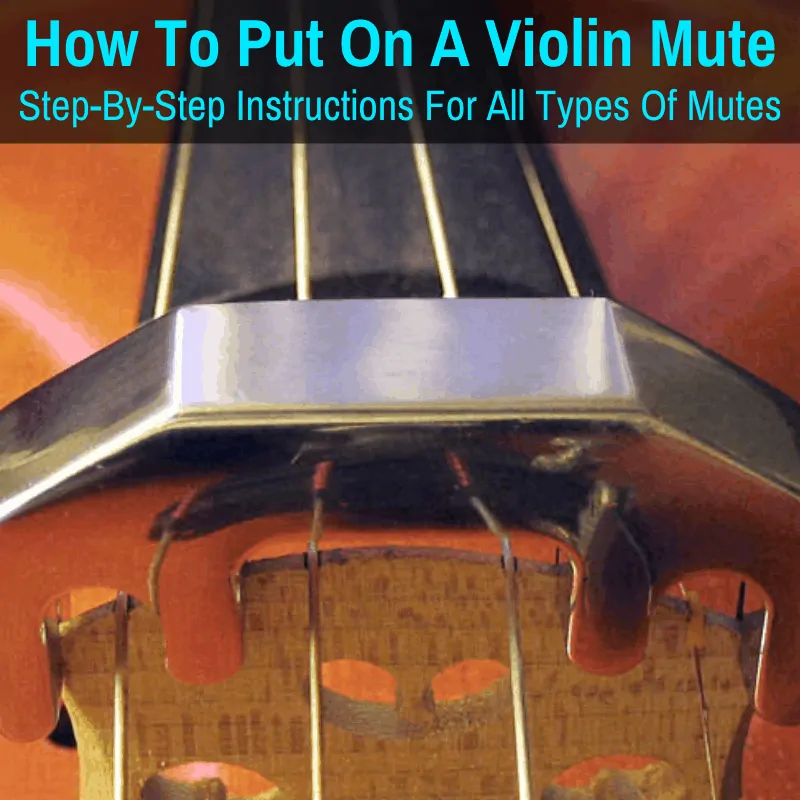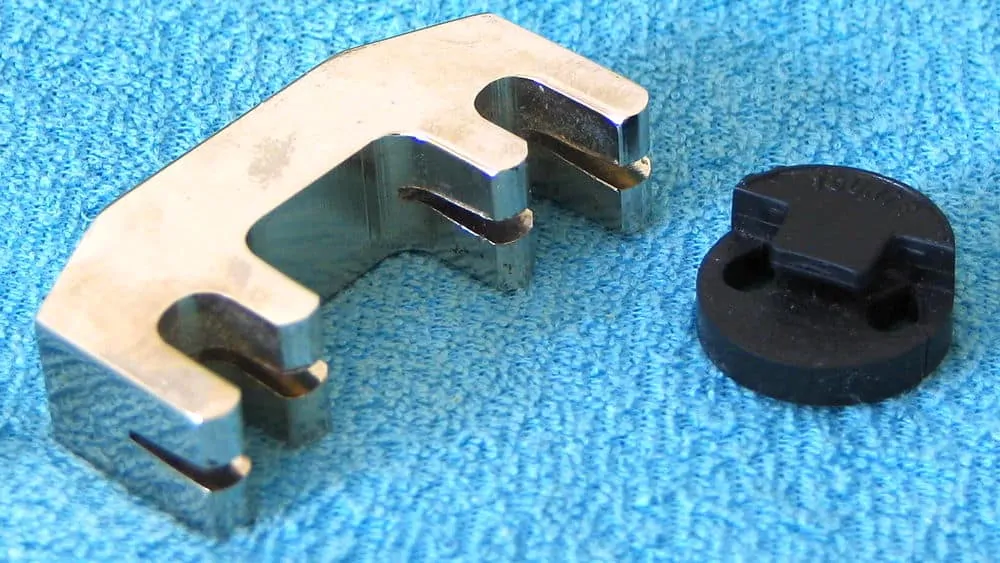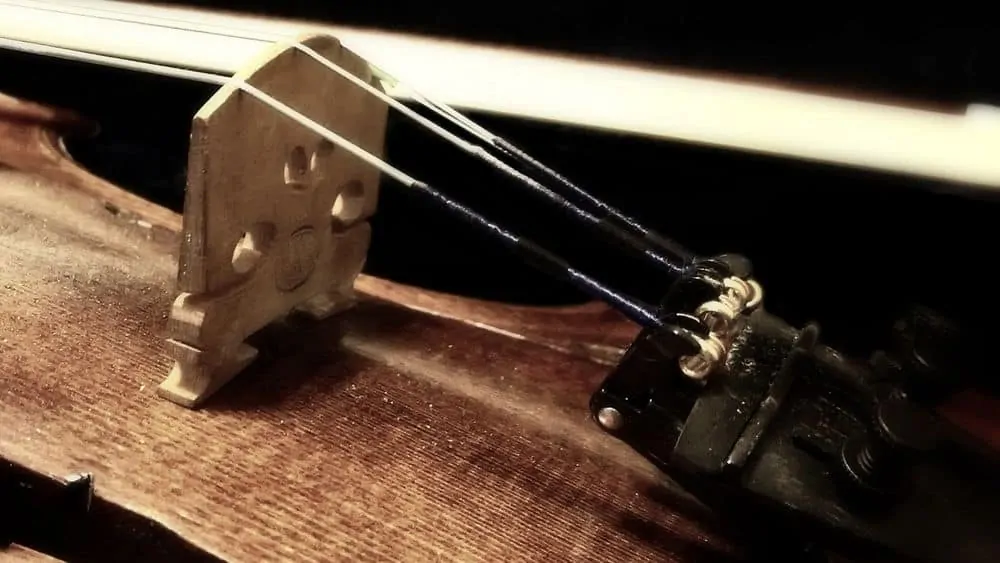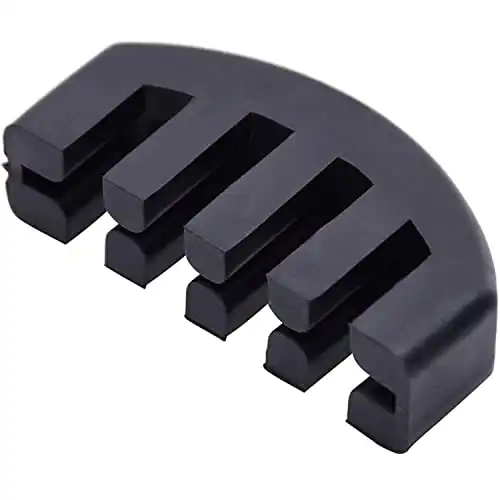 As violinists, there are times when we don’t want to practice.
As violinists, there are times when we don’t want to practice.
And there are other times when we feel the sudden urge to improve our playing skills and want to practice no matter what.
Often, those times come in the dead of the night or at other times when our practicing would be most unwelcome.
And it’s not just sudden bursts of creative energy.
There are instances when you might want to practice the violin, but can’t because it would disturb others.
For example, a touring musician may have trouble finding a good time (and place) to practice, being away from the comfort of their home.
Practicing early in the morning or late at night could be the only viable option—unfortunately, this may upset those nearby who are sleeping or just enjoying some quiet time.
Luckily, there are ways to reduce the volume of our violin.
In this article, we will take a look at one of the most useful and handy accessories for violinists of all ages and skill levels: the violin mute.
We will cover what a violin mute is, how a violin mute works, and, of course, how to install a violin mute, with a step-by-step guide.
Table of Contents
- 1 What Is A Violin Mute?
- 2 How Does A Violin Mute Work?
- 3 Types Of Violin Mutes
- 4 How To Put A Mute On A Violin
- 5 Best Violin Mutes
- 6 How To Use A Violin Mute: Final Thoughts
What Is A Violin Mute?
Violin mutes are small and inexpensive devices that you can install on the bridge of your violin. In addition to dampening the sound for silent playing—especially during practice, mutes also add texture (how the tempo, melody, and harmony are combined in a piece of music) to the overall quality of the violin’s sound output.
If you are wondering how violin mutes were born, here’s a bit of backstory. The first mention of its use came in the 17th century. It was a music theorist and mathematician named Marin Mersenne.
Then, in a surprising act during the 1700s, an operatic composer named Christoph Gluck, composed a movement called “Chi mi parla?”

“Chi mi parla?” incorporates the use of muted violin parts for an Italian Alceste opera. A few years later, Gluck’s Alceste was copied and revised by Hector Berlioz, a French Romantic composer.
When used to accompany a solo instrument, mutes can change a warm sound to a hushed and subdued tone lending a beautiful airy texture to a musical piece. Because of these various functions, mutes became popular among composers and violinists, whether for practice or performance.
How Does A Violin Mute Work?
By this time, we all know that a violin mute makes the sound from your violin mellower, quieter, softer, and warmer.
According to Hugo Pinksterboer, in his book ‘Tipbook Violin & Viola,’ mutes do this by muffling the higher frequencies by adding weight to the bridge. The mass of the violin mute absorbs the vibrations that the violin string produces, resulting in a reduced sound volume.
Types Of Violin Mutes

There are several types of violin mute available. They are:
Round Violin Mutes
Round violin mutes are the most popular style. They are the smallest type of mute and are made of black rubber, which is a safe material that will not damage your violin.
Torte Violin Mutes
Just like round violin mutes, torte mutes have a small hole in them. But instead of two holes that can be attached to two strings, these mutes are only placed on one string. Most people put them on the A string, but you can use them on any other string as well.
Heavy Duty Practice Rubber Mutes
Sometimes called Ultra Practice Mutes, these are heavy-duty violin mutes that dampen the sound of the violin considerably. Because they cover the entire bridge, they attenuates the sound more than small, round mutes.
Many beginner violinists use this type of violin mute to minimize the loudness of the violin or to dampen a scratchy sound. It is perfect for those who are living in an apartment or to those who do not have a sound-proof practice room, in order to avoid disturbing other people.
Slide-On Wire Violin Mutes
As the name implies, these are a type of violin mute that you can slide up to the bridge. Unlike other models, the slide-on only quiets the violin sound a little, making it ideal for creating an attenuated texture for orchestra or solo use.
The primary downside is that it has a spring mechanism. This could potentially damage the violin strings, if not correctly placed or if installed too aggressively. You don’t want to have to buy new violin strings, and then install them, just because of a mute.
Metal Practice Mutes
These practice mutes are the heaviest type of violin practice mute. They look like the heavy-duty practice rubber mutes but are a lot heavier because instead of pure rubber, they are made from chrome-plated brass or iron. Some brands have rubber coating, and others do not.
How To Put A Mute On A Violin

If you have decided to use a violin mute in order to avoid waking up your neighbors when practicing at nighttime, or just to add texture in your playing, this is how to properly put on a violin mute.
Step 1: Determine what type of violin mute to use
As previously mentioned, there are different types of violin mutes. It is essential that you choose the appropriate violin mute for your objectives. For instance, if you want to play a more muffled sound, you could use practice mutes because they attenuate the sound more than regular mutes do.
Once you know what kind of mute you are using, you can proceed to step two.
Step 2: Clean the strings from the tailpiece towards the scroll
If you have a violin or string cleaner, wipe the strings starting from the tailpiece all the way towards the scroll. If you do not have a cleaner, just get a soft fabric and run it along the strings. Removing the rosin build-up will keep your violin strings and bridge clean, with a smooth surface.
Cleaning the violin strings before attaching the mute is vital, since the rosin usually sticks to the area near the bridge. And if there is a rosin build-up on the area where you install your mute, it might not work properly.
Step 3: Slide your mute onto the strings and attach it to the bridge
Since there are different types, installing a violin mute varies depending on the shape or the slits of the mute.
Installing A Round Violin Mute
- Inspect the two holes in the small round mute. You will notice that there are slits connected to these holes.
- Hold the mute with one side of the tabs facing the bridge, and the other side facing you.
- Using the slits, slide it in between the two middle strings at the non-playable area (between the bridge and the tailpiece). To do this, just flip the mute sideways. Then, allow the D and A strings to go inside the two small holes via the slits.
- When you are not playing, you can let your mute rest there.
- If you want to use the violin mute, slide it up the strings towards the scroll, and hook the top tab part over the bridge.
The following video shows how to install several mutes. The first one she demonstrates is the round mute.
Installing A Torte Violin Mute
- Inspect the slit on your torte mute. It is connected to a single hole in the middle of the mute.
- Using the slit, flip the mute and let the string (usually A sting) go in the center through the cut or slit connected to the hole.
- If you want to use the violin mute, slide it up the strings towards the scroll, and hook the top tab part over the bridge.
- Whenever you are resting or not playing, you can unhook the mute from the bridge and leave it dangling on the string.
This is the same video from above, but cued to the second mute, which is the single-holed torte mute.
Installing A Heavy Duty Practice Rubber Mute
- Instead of checking the two holes in the mute, inspect the curvature. One side is taller than the other.
- Hold it over the bridge, with the bigger side directly above the G string and the smaller end on top of the E string.
- To use the mute, put it over the bridge. The bridge should fit exactly into the bridge-shaped hole on your practice mute.
- Once it is attached to the bridge, you can start playing with an attenuated, muted sound.
This video shows how to put on a heavy-duty or ultra practice mute.
Installing A Slide-On Wire Violin Mute
Putting on this type of mute may seem complicated at first, because it has a wire and a plastic part, but it’s much easier than it looks. For easy mounting of this mute over violin strings, see the video below.
Installing A Metal Practice Mute
Just like the pure rubber, ultra practice mute or heavy-duty practice mute, this type is easy to install by simply placing it over the bridge. The bridge goes in the space in the center of the mute, parallel to the mute’s length. See the video below for descriptions and instructions on how to use this type of practice mute.
Best Violin Mutes
So which violin mutes are best? It really depends on your needs.
If you’re trying to dampen the sound of your instrument as a whole, in order to avoid disturbing others, go with a rubber practice mute. It dampens every violin string.
If you only want to dampen one string in order to achieve a specific sound, use a torte mute. To dampen the A and D strings together, use the ever-popular round mute.
If you only want a slight effect, the slide-on wire mute does the least amount of dampening.
As for which specific mutes to get..it doesn’t really matter. There is not much difference between brands, so there is no point in spending a ton of money on a mute. I would just head to Amazon and get any mute that has good reviews.
How To Use A Violin Mute: Final Thoughts
Putting a violin mute on a violin is not hard, especially if you have instructions. That’s why we made sure to provide a step-by-step guide for each type of violin mute.
Hopefully these guides have helped you no matter which type of mute you have. And if you have yet to buy one, hopefully the information in this article has helped you figure out which type of mute is best for you.
Photo Credit
Title photo courtesy of デニス モジョ from San Francisco, California, USA [CC BY]

Leave a Reply